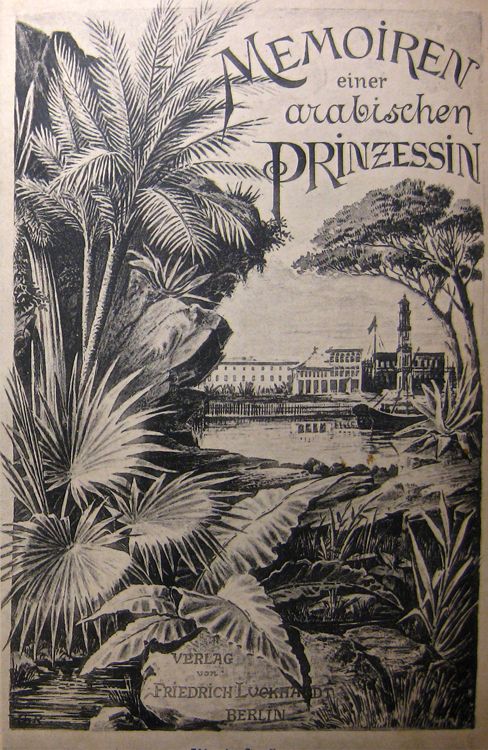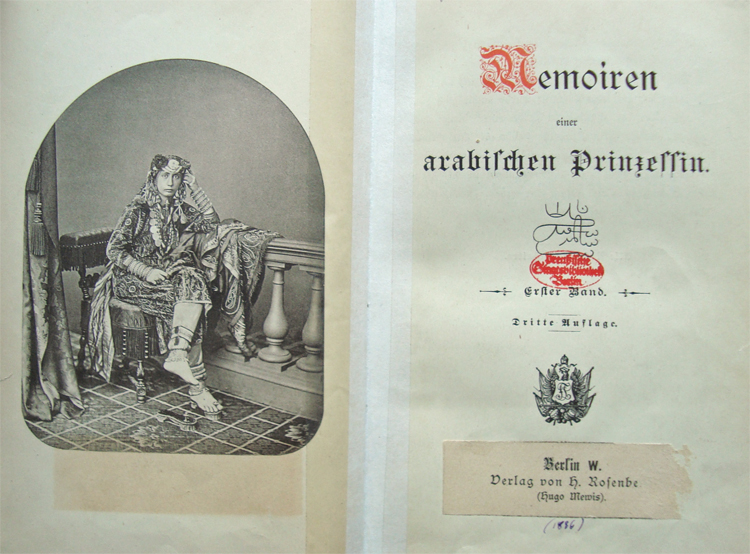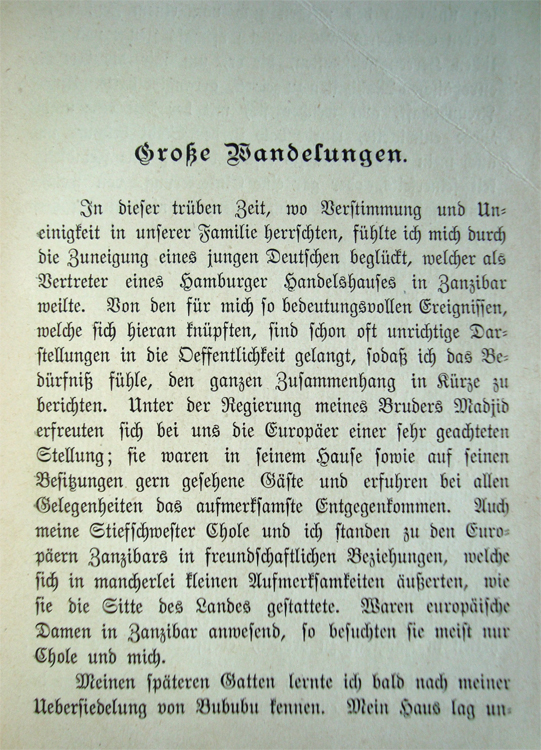Title page of the second volume of the fourth printing, also used as the cover illustration. The image of tropical plants and trees, serving as an entry point into the memoirs, forms an exotic frame for a harbour view with the palaces of Zanzibar Town in the background. The “view from outside” that this creates suggests the expectations of the readership of the time – according to advertisements for the book (probably by the publishing house), it would offer “particularly impressive descriptions of Mohammedan [sic] culture in East Africa”.
Call number: Berlin State Library, Us 1050-1/2<4>
Digitalised version (in German)
The frontispiece presents us with a photoengraving of Emily Ruete in Arab dress, with her Arabic signature “Salme [bint] Said [bin] Sultan” on the opposite main title page between the book’s title and the publisher’s information. The photoengraving features on the covers of almost all modern versions of the memoirs.
Call number: Berlin State Library, Us 1050-1<3>
“I met my future husband soon after my move from Bububu. My house was directly adjacent to his […]. Our friendship, which gradually evolved into a deep love, was soon known about the town and my brother Madjid also learned of it – I never experienced any hostility from him on this account, let alone the imprisonment that has been the subject of some tall tales.
Naturally I harboured a desire to quietly leave my homeland, where a union with my beloved would have been quite impossible […]” (Memoiren einer arabischen Prinzessin, vol. 2, pp. 141-142).
The memoirs were (and to some extent still are) all too often reduced to a “love story”. Emily Ruete herself devotes only five pages to the meeting, marriage, and journey to Europe. Her commentary is characteristically – and significantly – prosaic; hinting at the “incorrect depictions” that had already appeared, she styles the passage as a “reply” to the narratives published before the memoirs. Her chapter is titled simply “Great Changes”.
Call number: Berlin State Library, Us 1050-2<3>



